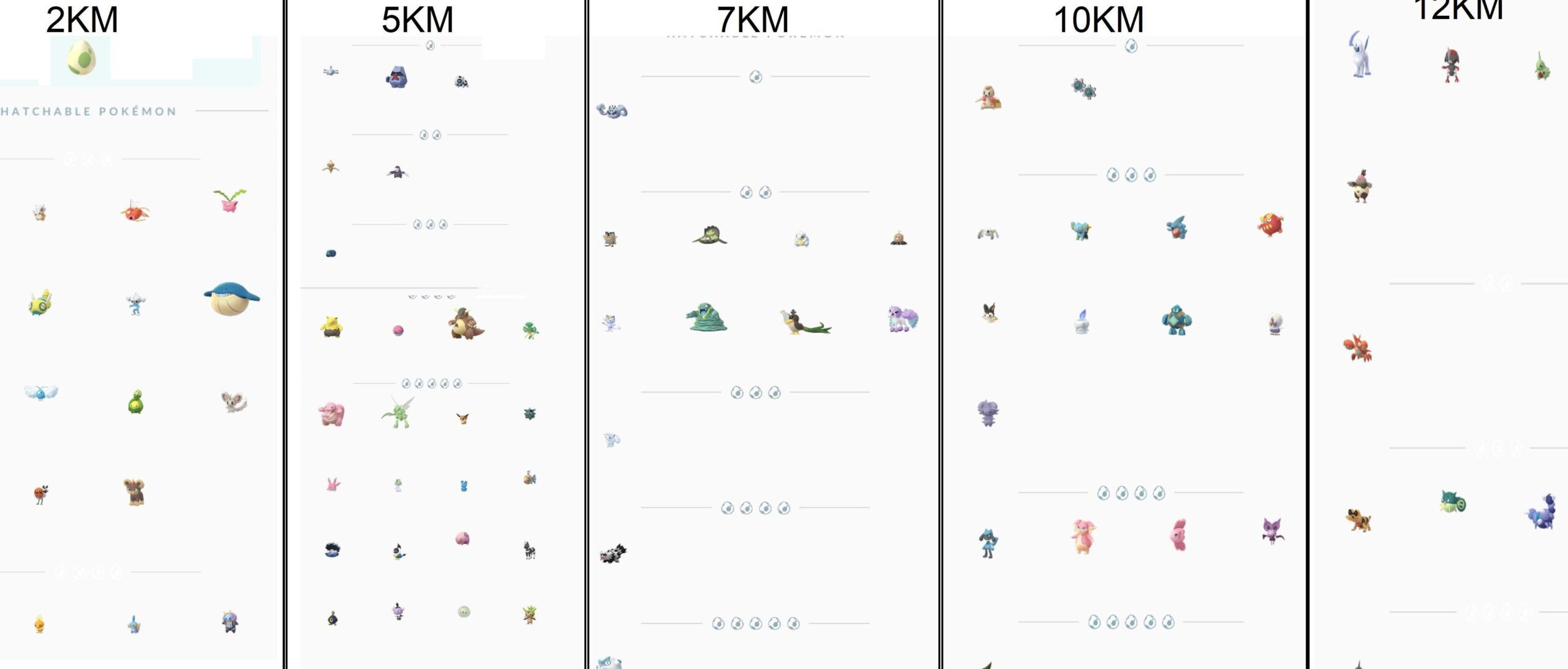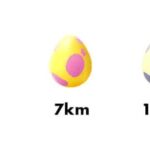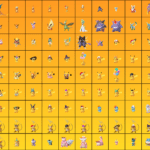Pokémon Go Egg charts: What’s in 2km, 5km, 7km, 10km and ‘Strange’ red 12km Eggs
Pokémon Eggs have been an integral part of the Pokémon franchise since the second generation, and they play a significant role in Pokémon Go. In this mobile game, players find Pokémon Eggs at random from PokéStops, or through Gifts and encounters with Rocket Leaders. Unlike the main series games, Pokémon Go does not feature a breeding mechanic, and the maximum number of Eggs a player can hold is nine.
One of the unique aspects of Pokémon Eggs in Pokémon Go is that players cannot determine what Pokémon is inside the Egg until it hatches. However, players can narrow down their options based on the type of Egg, which falls into specific groups: 2km, 5km, 7km, 10km, and 12km Eggs. Below, we will explore the contents of each Egg type.
Pokémon Go 2km Egg Chart
As of the latest update, the 2km Egg pool features a variety of Pokémon that players can hatch. This pool can change during in-game events, which may also affect the rarity of certain Pokémon. Here are some of the Pokémon currently available for hatching from 2km Eggs:
- Pichu (Gen 2)
- Cleffa (Gen 2)
- Igglybuff (Gen 2)
- Togepi (Gen 2)
- Tyrogue (Gen 2)
- Wynaut (Gen 3)
Players can also hatch shiny variants of these Pokémon from 2km Eggs.
Pokémon Go 5km Egg Chart
The 5km Egg pool has also seen recent changes, particularly at the beginning of new game seasons. Similar to the 2km Eggs, the Pokémon available from 5km Eggs can be influenced by in-game events. Here are some Pokémon that players can hatch from 5km Eggs:
- Sableye (Gen 3)
- Mime Jr. (Gen 4 – Regional)
- Vanillite (Gen 5)
- Grookey (Gen 8)
- Cutiefly (Gen 7)
- Scorbunny (Gen 8)
- Komala (Gen 7)
- Sobble (Gen 8)
Shiny variants of Pokémon in this pool are also possible to hatch.
Pokémon Go 7km Egg Charts
There are two types of 7km Eggs in Pokémon Go: those obtained from Gifts and those received through Gift Exchanges. Each type has its own unique pool of Pokémon. The following Pokémon can be hatched from the 7km Eggs obtained from Gifts:
- Galarian Meowth (Gen 1)
- Galarian Slowpoke (Gen 1)
- Galarian Ponyta (Gen 1)
- Galarian Zigzagoon (Gen 3)
- Galarian Darumaka (Gen 5)
- Galarian Stunfisk (Gen 5)
Gift Exchange 7km Eggs
The Gift Exchange 7km Egg pool features its own selection of Pokémon:
- Hisuian Growlithe (Gen 1)
- Hisuian Sneasel (Gen 2)
- Wynaut (Gen 3)
- Basculin (White Striped) (Gen 5)
- Deino (Gen 5)
- Pancham (Gen 6)
- Goomy (Gen 6)
Pokémon Go 10km Egg Chart
For 10km Eggs, players can find a diverse array of Pokémon. As with other types of Eggs, the contents can change based on game updates:
- Druddigon (Gen 5)
- Goomy (Gen 6)
- Carbink (Gen 6)
- Jangmo-o (Gen 7)
- Dreepy (Gen 8)
- Charcadet (Gen 9)
- Frigibax (Gen 9)
Pokémon Go Red ‘Strange’ 12km Egg Chart
12km Eggs, also referred to as ‘Strange’ Eggs, can be obtained by defeating Team Go Rocket Leaders. The current pool includes:
- Sandile (Gen 5)
- Pawniard (Gen 5)
- Vullaby (Gen 5)
- Deino (Gen 5)
- Pancham (Gen 6)
- Salandit (Gen 7)
- Larvitar (Gen 2)
- Varoom (Gen 9)
Shiny variants may also be hatched from 12km Eggs.
Pokémon Go Egg Hatching Mechanics
Hatching Pokémon Eggs in Pokémon Go serves as a fun method for expanding your Pokédex. However, the process is not as straightforward as one might think. While players cannot see the exact Pokémon inside until they hatch, each Egg type holds different Pokémon with varying rarity levels. This system resembles loot boxes in other games, where the odds of hatching specific Pokémon are not disclosed.
To maximize your Egg hatching experience, consider the following tips:
- You can only hold a maximum of nine Eggs at a time, including those in Incubators.
- Disposable Incubators purchased with PokéCoins are limited to three uses each; use them for 10km and 12km Eggs while saving your infinite-use Incubator for the quicker 2km and 5km Eggs.
- Only the first evolution of each Pokémon line is available from Eggs; for example, Bulbasaur can hatch, but not Ivysaur or Venusaur.
- The app does not need to be open to track Egg distance if Adventure Sync is enabled, but distance traveled in vehicles won’t count.
- Keep in mind the CP of the Pokémon hatched is determined by your trainer level at the time you acquired the Egg, not when it hatches.
- Hatching Eggs contributes to certain game objectives, which may incentivize players to engage with this feature.
With these insights, trainers can make the most of their Pokémon Egg hatching adventures in Pokémon Go!




























Post Comment